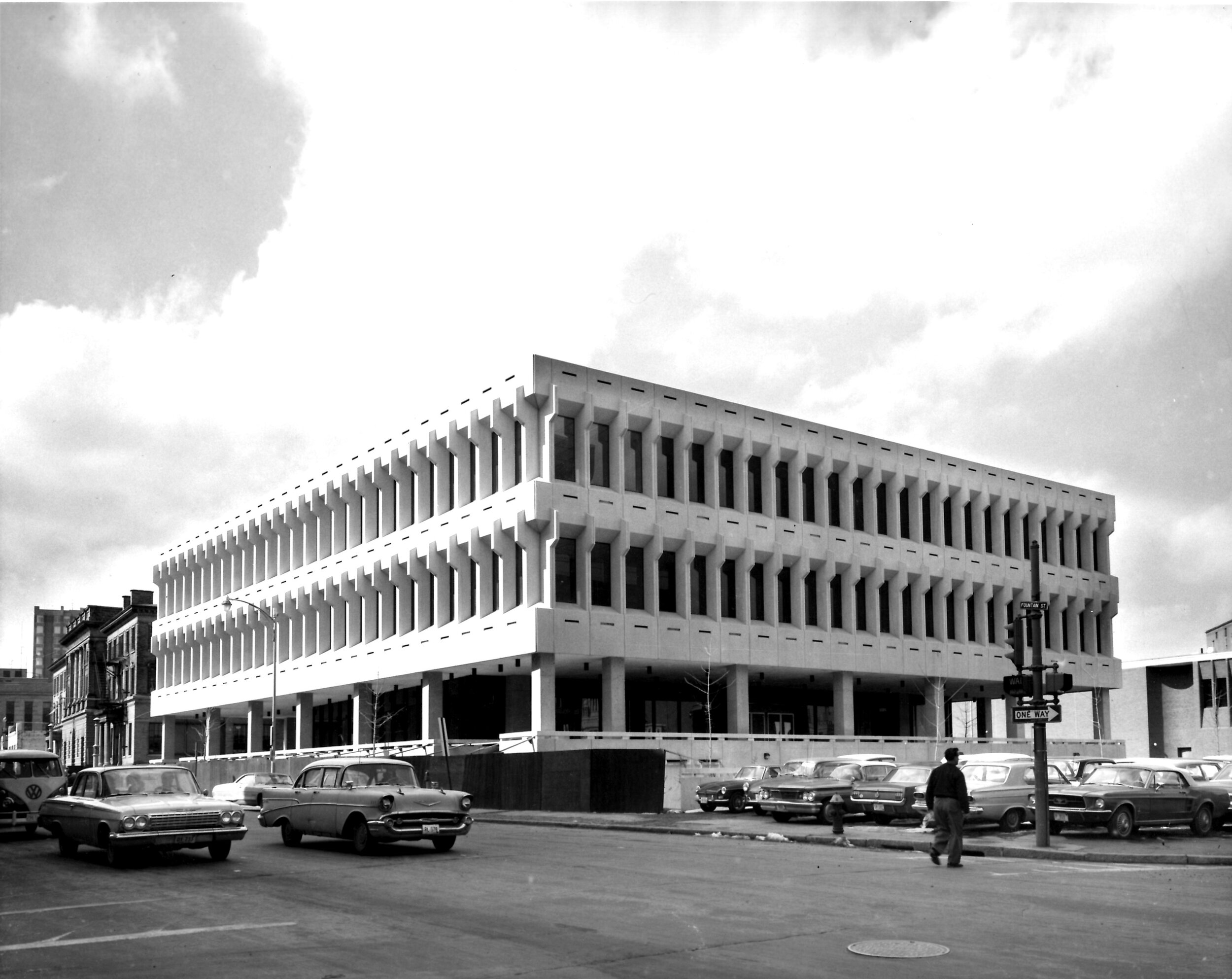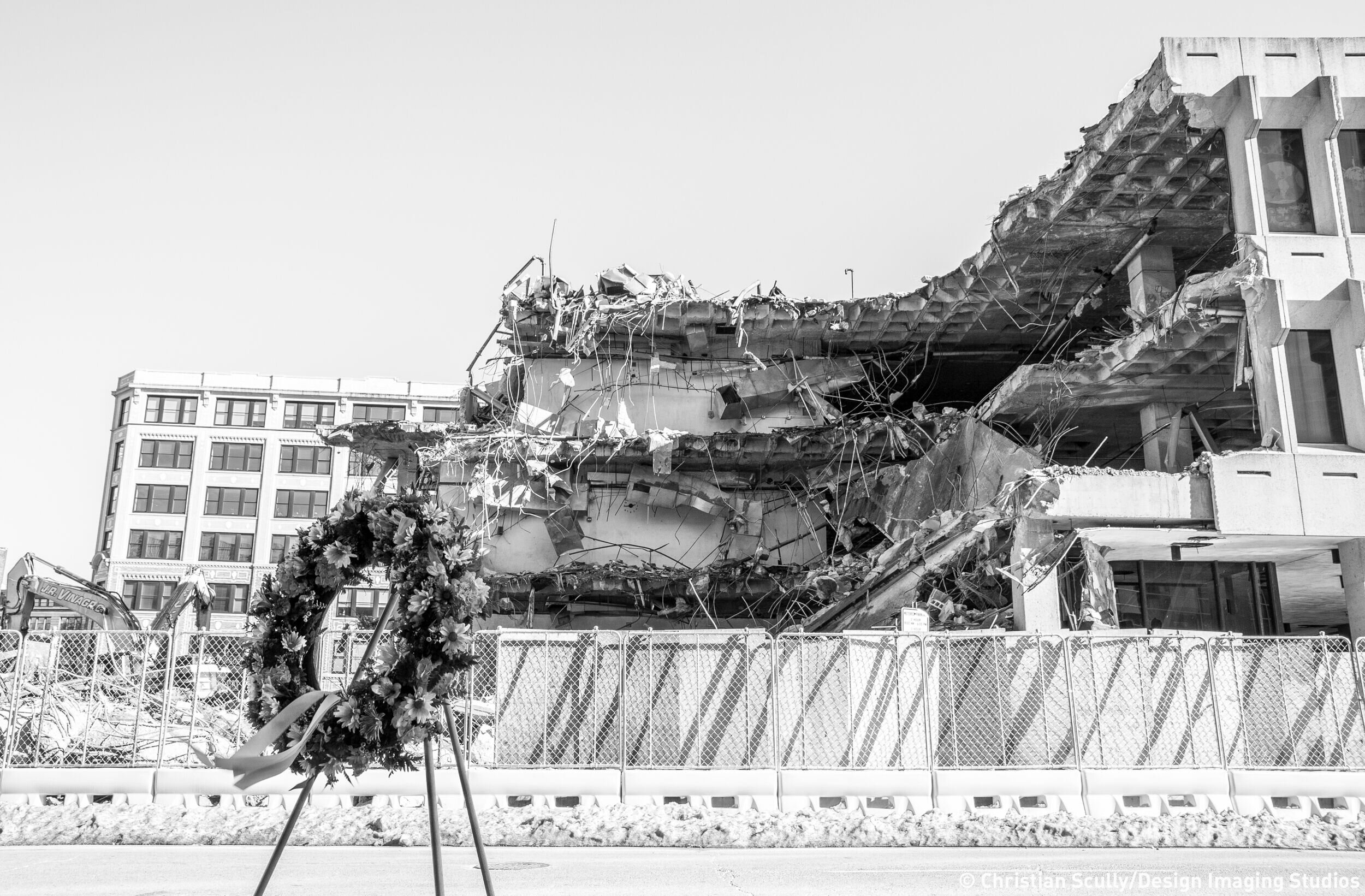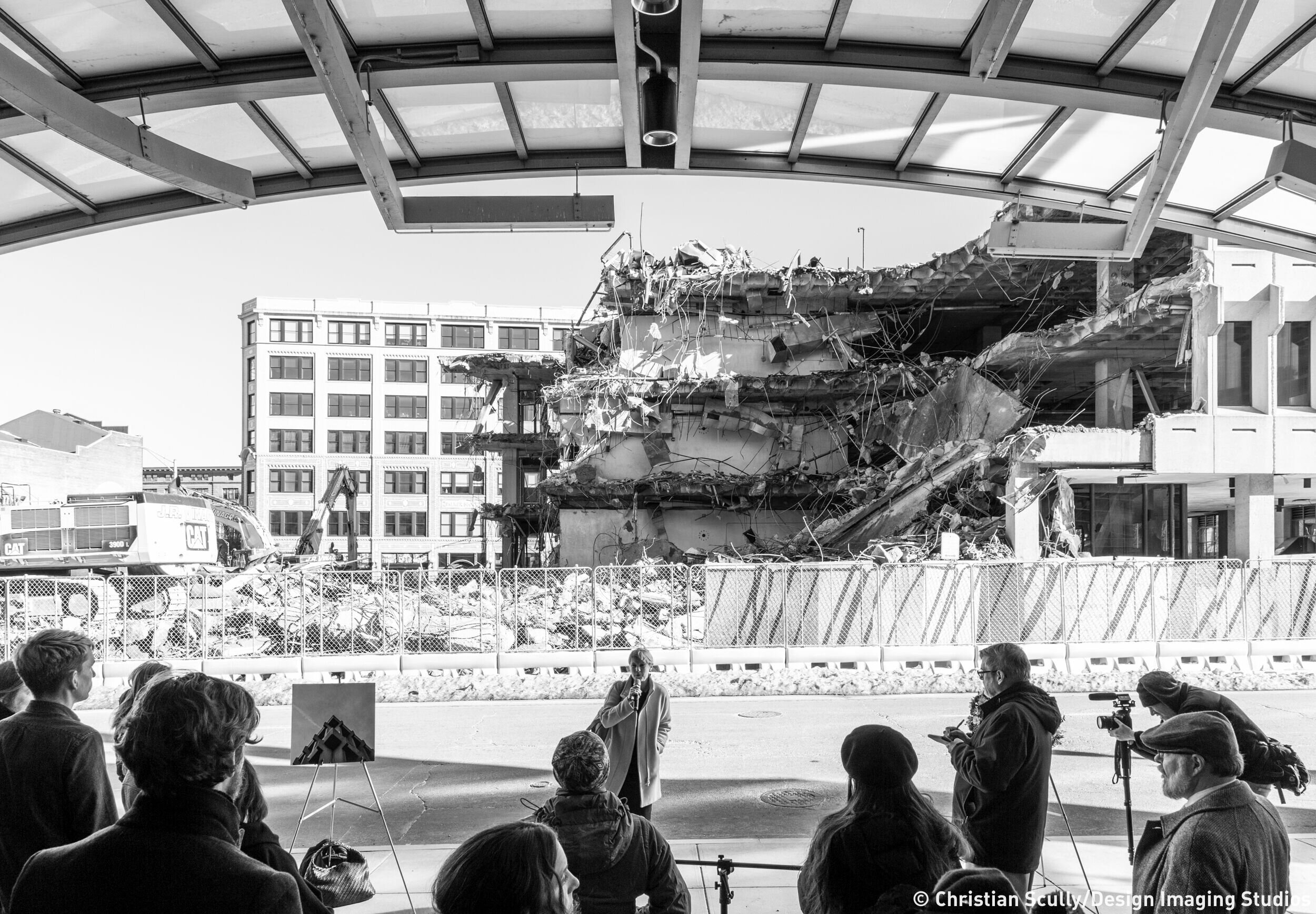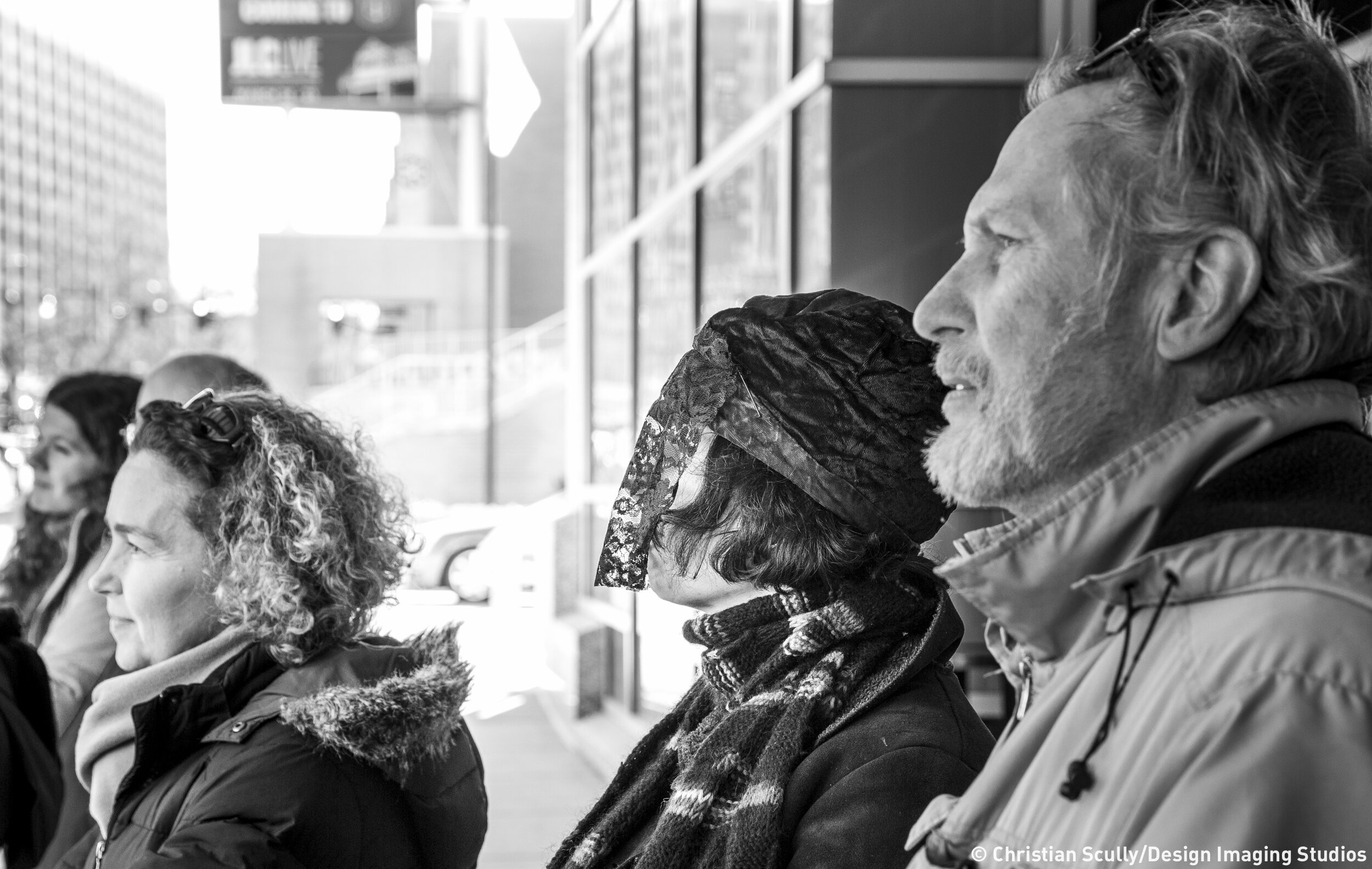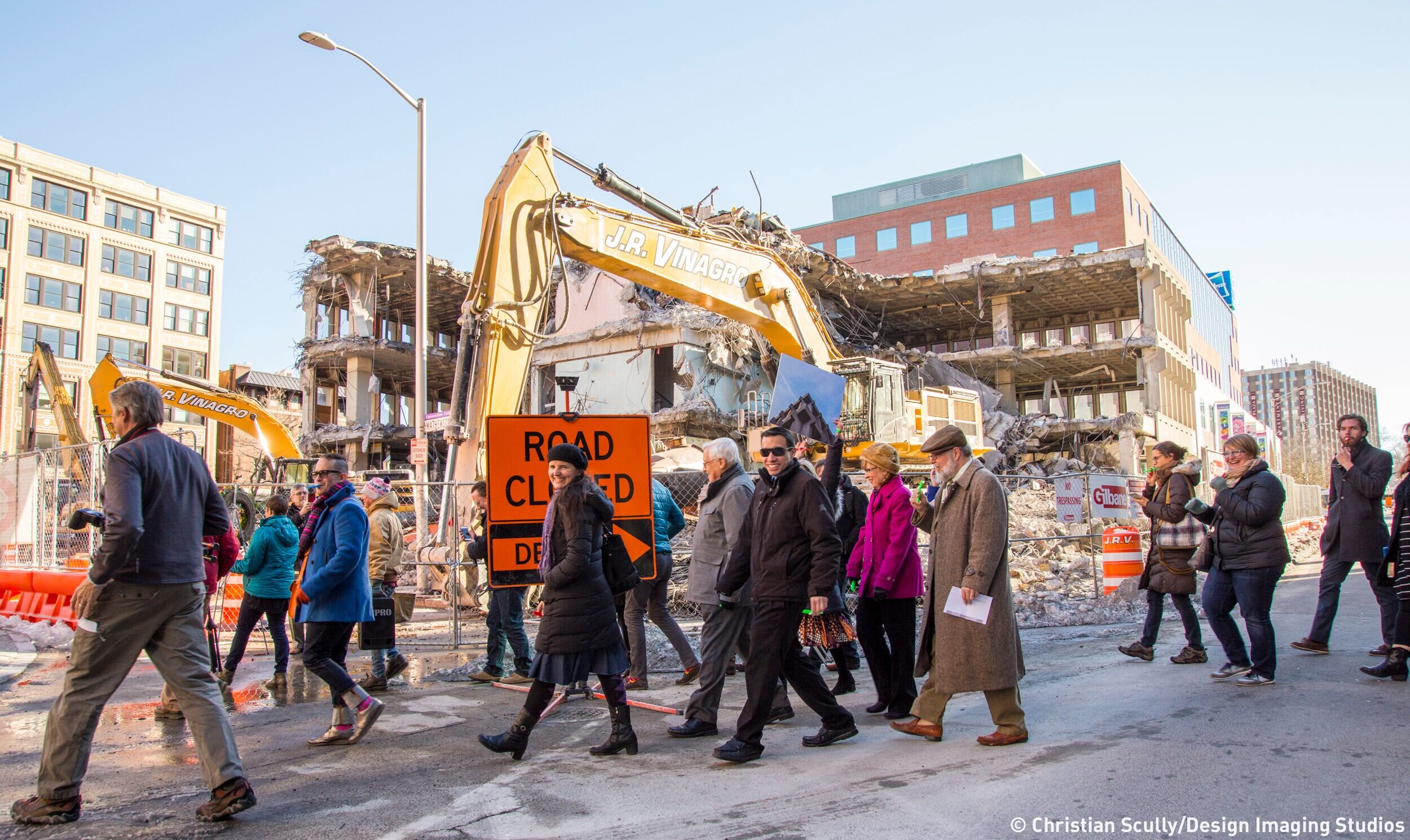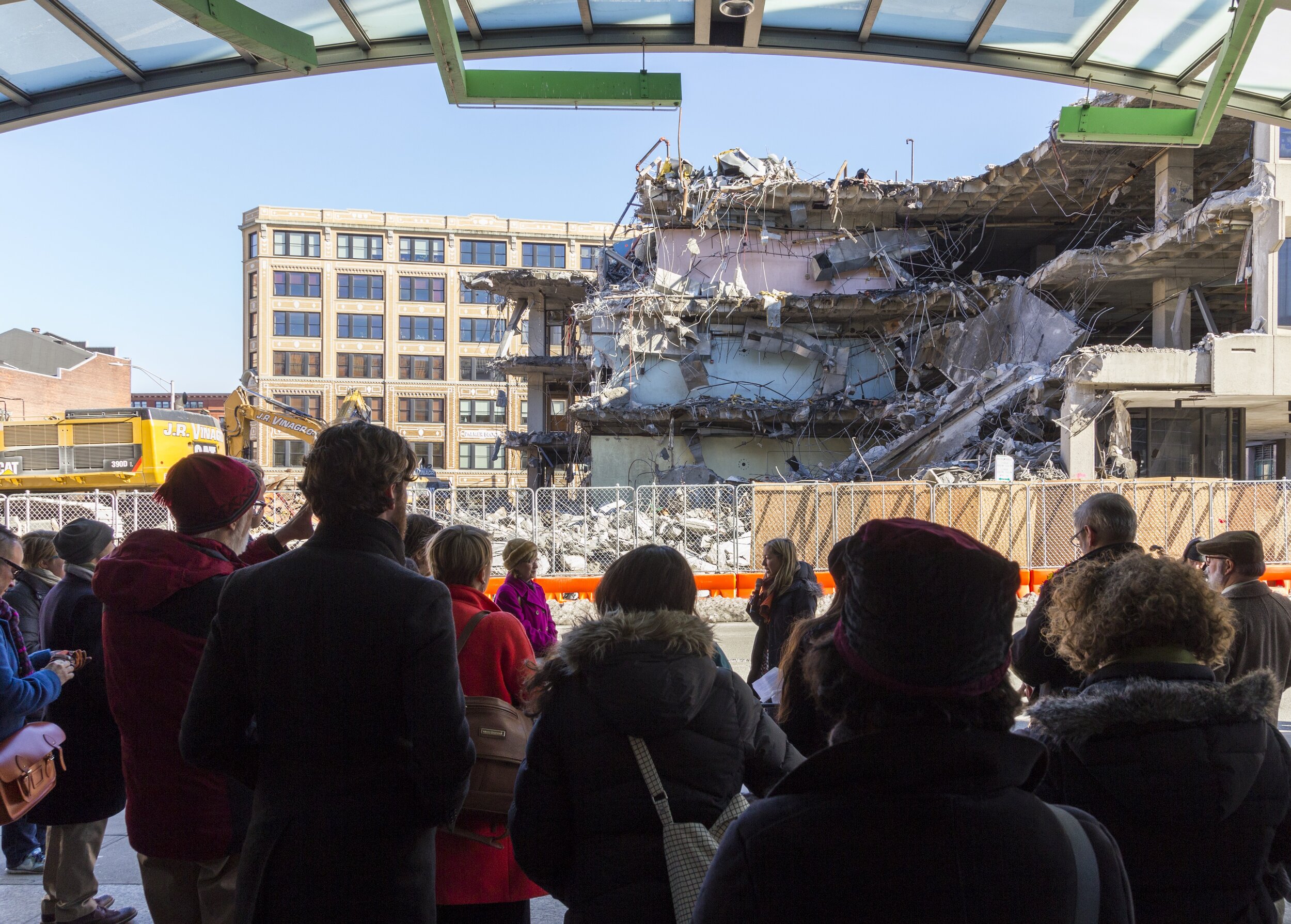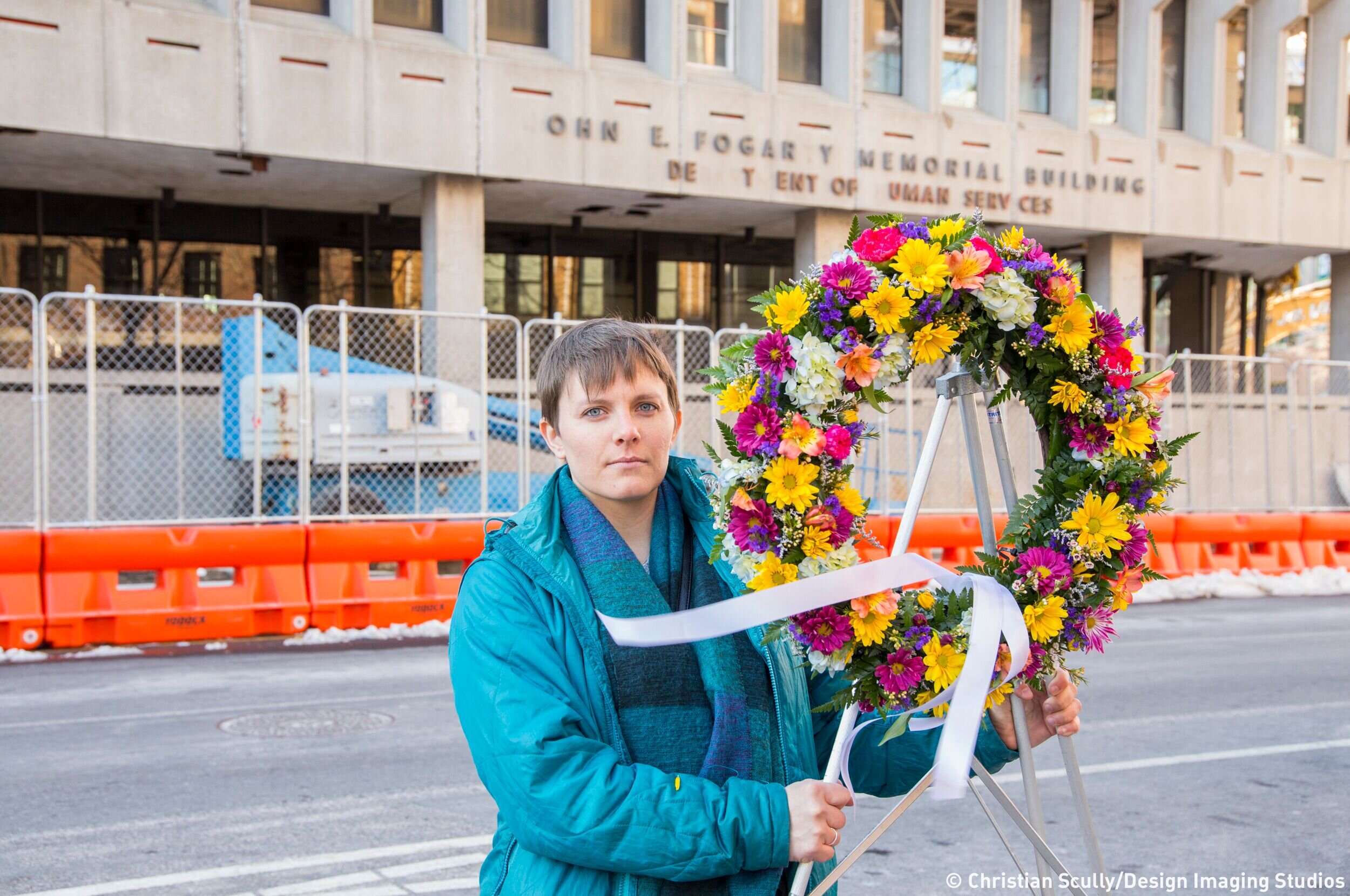The Fogarty Funeral
111 fountain street, providence / march 17, 2017
The Fogarty Funeral was a preservation happening organized by Marisa Angell Brown, Caroline Stevens, Janaya Kizzie and Steve Lubar to mark the demise of Providence’s most significant Brutalist building, designed by the Providence firm Castelluci, Galli and Planka in 1968. The curatorial team wrote an obituary for the building in the Providence Journal and organized a public wake, where the lead architect’s daughter gave a memorial statement.
An Obituary for the Fogarty Building/ The Providence Journal (Mar 15, 207)
Marisa Angell Brown and Caroline Stevens
The John E. Fogarty Memorial Building, of 111 Fountain St, Providence, passed away on Monday, March 13, after a protracted and debilitating illness. It was 49 years old and was the beloved child of the Rhode Island architecture firm Castellucci, Galli & Planka Associates.
At birth, the Fogarty served the Rhode Island Department of Human Services. It was later leased to the state’s Department of Human Resources. From 1999 to 2003, the Fogarty was used sporadically by the Department of Education. That year, hundreds of students were evacuated from the building because they suffered breathing problems. Since then, it has been vacant. In 2005, it was purchased by the Procaccianti Group.
As a young building, the Fogarty was part of an enthusiastic family of Brutalist government buildings that expressed the energy and confidence of Lyndon Johnson’s 1960s Great Society programs. To its neighbors, the building could be difficult, challenging — abrasive, even. It had a strong personality and was not always easy to engage with. Thosewho loved the Fogarty valued its strong sculptural form and the texture of its reinforced concrete, which looked like molded sand up close, while those who felt less love for it saw the building as ugly, rough and imposing.
Other members of the Brutalist family predeceased the Fogarty building, including cousins like Paul Rudolph’s Orange County Government Building (d. 2015) and John Johansen’s Morris A. Mechanic Theatre in Baltimore (d. 2015). Some relatives are on life-support, their future uncertain. A lucky few have found a new lease on life through sensitive renovation, including Marcel Breuer’s old Whitney Museum (now the Met Breuer), Paul Rudolph’s Art and Architecture Building in New Haven and — closer to the Fogarty’s old stomping grounds — Boston’s City Hall and the University of Massachusetts Dartmouth campus (another Rudolph creation).
Jana Planka, the daughter of one of the Fogarty’s lead architects, H. Michael Planka, remembers her father’s excitement about designing the building: “He was a very progressive man and was looking to do something different and a little left of center — he was looking to break the mold.” The Fogarty’s baby pictures reveal an energy and sense of confidence that jibe with the era’s muscle cars — the Ford Mustang, Chevy Camaro, and Plymouth Road Runner. But the world changed around it, and tastes changed and by the 21st century, the Fogarty had few friends left. The death knell sounded a couple of weeks ago on March 1, when the replacement building’s permit was issued.Who are the Fogarty’s heirs? What inheritance does it leave? For a new generation of architects and architecture fans, some aspects of Brutalism are in favor again, such as a new interest in texture; in industrial materials, roughly handled; and in sculptural forms that can be achieved by molding concrete.
For those of us who live in Providence, and love Providence, the Fogarty was always a formidable building. Even in death, it remains so. Demolition began on Monday, and at the end of the day, one corner of the building had succumbed, leaving a gaping hole. The steel bars known as rebar that “reinforce” the sand and stone that make up concrete were left exposed and deformed, having been cut through by the nearby excavator. But some sense of strength remained: Daniel Govoni, a project manager with Northstar Project & Real Estate Services, was quoted in The Providence Journal on March 9, saying, “The bones of the building, they’re still intact.” No longer. RIP.
A funeral for the Fogarty Building will be held on Friday, March 17, at 4 p.m. outside of 100 Fountain Street. Short eulogies will be delivered by those who knew the Fogarty best. There will be an open casket and a funeral procession around the building, ending, as wakes do, with pints and good cheer at a neighborhood watering hole. All are welcome. In lieu of flowers, donations may be made to DownCity Design.
clippings
“Plan a Building’s Funeral in Six Steps,” National Trust for Historic Preservation (Apr 19, 2017).
"Banished Brutalism: Death Knells Abound for Building Style," Associated Press (May 12, 2017).
"Funeral Held for Fogarty Building in Downtown Providence," NBC10 (Mar 18, 2017).
"Fogarty Building Funeral Pays Last Respects to Brutalist Icon," Providence Journal (Mar 18, 2017).
